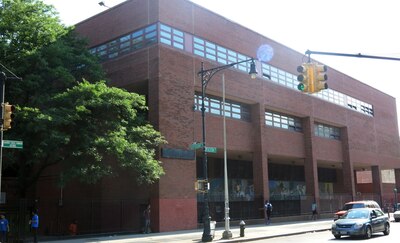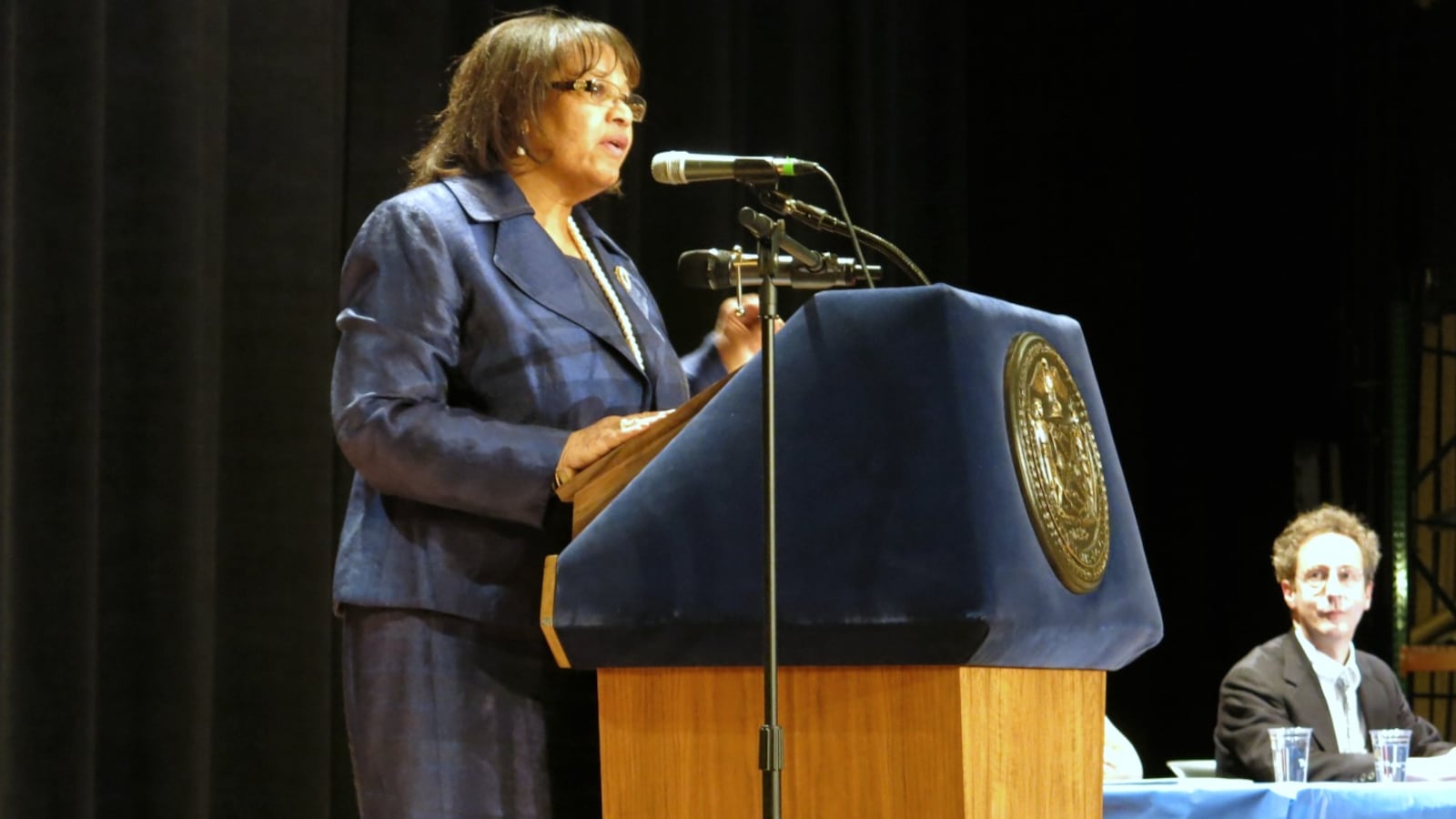Chancellor Carmen Fariña and other top officials summoned about two-dozen principals to the Education Department headquarters for a private meeting last Thursday — exactly one week before the start of the school year — to unveil a long-awaited plan: the city’s scheme to turn around the principals’ struggling schools.
But the description that she and other officials offered was only a basic outline, according to people briefed on the plan, even though it is expected to launch on the first day of school.
The plan places the low-performing schools in an intensive-support group, dubbed the “School Achievement Initiative.” It harkens back to a special “Chancellor’s District” created for struggling schools nearly two decades ago, though department officials on Wednesday pushed back against that comparison.
The new three-year initiative will send support teams to the 23 state-identified struggling schools to diagnose their needs and offer individualized coaching for teachers and other assistance, according to officials. Aimee Horowitz, a Brooklyn and Staten Island high school superintendent, will now also oversee the 13 low-performing high schools that are part of the initiative.
The intervention plan is meant to satisfy federal requirements that say districts must begin “whole-school reforms” in long-struggling schools by the start of this school year. As that deadline approached, many schools were anxiously awaiting the city’s plan.
Educators at a few of the schools said this week that they are optimistic but want more information about the plan, which sticks to Fariña’s promise to prop up troubled schools rather than close them.
“If it’s done well, it could be something good for failing schools,” said the principal of a middle school in the initiative. But right now, he added, “It’s still in the baby stage.”
Last Thursday’s meeting was organized by Sharon Rencher, the chancellor’s senior adviser for school improvement, who is leading the struggling-schools initiative. Rencher gave a brisk PowerPoint presentation about the plan but no handouts, according to attendees. She and other officials said more details would be forthcoming and asked the principals not to pass on any of the information.
“There hasn’t been one document shared that we can look at,” said a Bronx principal who asked not to be named because of the order to keep the meeting details private. “They’re holding up everything until the mayor and the chancellor announce the initiative.”
Still, some details of the plan emerged at that “orientation meeting” and in follow-up consultations this week at some of the schools, according to people involved.
The initiative involves schools from across the city, though the bulk are in the Bronx and Brooklyn, according to a list of meeting attendees. The list includes Automotive High School and Boys and Girls High School in Brooklyn, which have both been floundering for so long without having improvement plans in place that the state labels them “out-of-time schools.”
The department will dispatch support teams to each of the initiative schools — many of which rank among the bottom 5 percent of schools in the state based on student test scores and graduation rates. Each small team is responsible for a handful of schools, and their leaders include former principals and heads of school-support networks.

Joshua Good, a former principal and network leader assigned to Automotive High School, told school staffers Tuesday that his team would be at the school “constantly,” according to a teacher. He added that the school will receive walk-through evaluations at the start, middle, and end of the school year in order to track its progress, the teacher said.
According to the teacher, there was no mention of extra funding to hire more teachers and counselors or adjustments to the enrollment policies that have left the school with one-third students with disabilities — a share far higher than the city average.
The Bronx principal said that one of his teachers asked their new support-team leader this week if the school would get any extra money for hiring. The leader, whose official title is “director of school redesign,” said, “categorically: no,” according to the principal.
“In my opinion,” said the Automotive teacher, the intervention plan “is more of the same, but with a different name.”
City officials applied for federal school-improvement grants in February to help fund the interventions at its lowest-ranked schools. Some of the details of the initiative echo ones that were in the applications.
For example, the applications say that each of the city’s lowest-ranked schools will get three formal visits per year along with a “complete NYCDOE team to assist” its principal. The application’s plan also calls for each struggling school to be paired with a higher-performing “sister school” it can learn from. The plan from February also says that principals of struggling schools could be replaced with more experienced ones, though that has not yet been suggested for the initiative schools.
City officials appear to have been waiting to finalize their plans for the struggling schools until they learned which schools received improvement grants. Some of the grants did not come through until August, which was when officials asked a math consultancy to start working with initiative schools as soon as this month.
“It’s a very short turnaround,” said David Howell, operations manager for the New York-based consultancy, called Metamorphosis Teaching Learning Communities.
Former city schools chief Rudy Crew formed the Chancellor’s District in 1996, which grew to include nearly 60 struggling schools before it was disbanded in 2003. The education department flooded the schools with extra materials, teachers, and training, but also issued them specific directives.
The model, which was embraced by the teachers union, resulted in higher reading scores for some students. But critics said it amounted to micro-management and argued that its limited success did not justify its expense.
At a June press conference, Fariña strongly denied that she was planning to establish her own version of a Chancellor’s District.
“There is no intention whatsoever of having a Chancellor’s District that puts struggling schools together,” she said.
Senior Deputy Chancellor Dorita Gibson argued Wednesday that even though the new initiative groups together struggling schools, it differs substantially from the old Chancellor’s District.
First, while the initiative puts the high schools under a single superintendent, the elementary and middle schools will remain in their own districts under their current superintendents, Gibson said. Also, all the schools will remain part of their self-selected support networks.
Second, the department will customize the support for each school in the initiative based on its needs, rather than mandate similar changes at every school, as was often the case with the Chancellor’s District, according to Gibson.
Gibson also insisted that the initiative would be ready to launch on the first day of school Thursday, and noted that some teachers in the initiative schools had already received training – on Wednesday.

